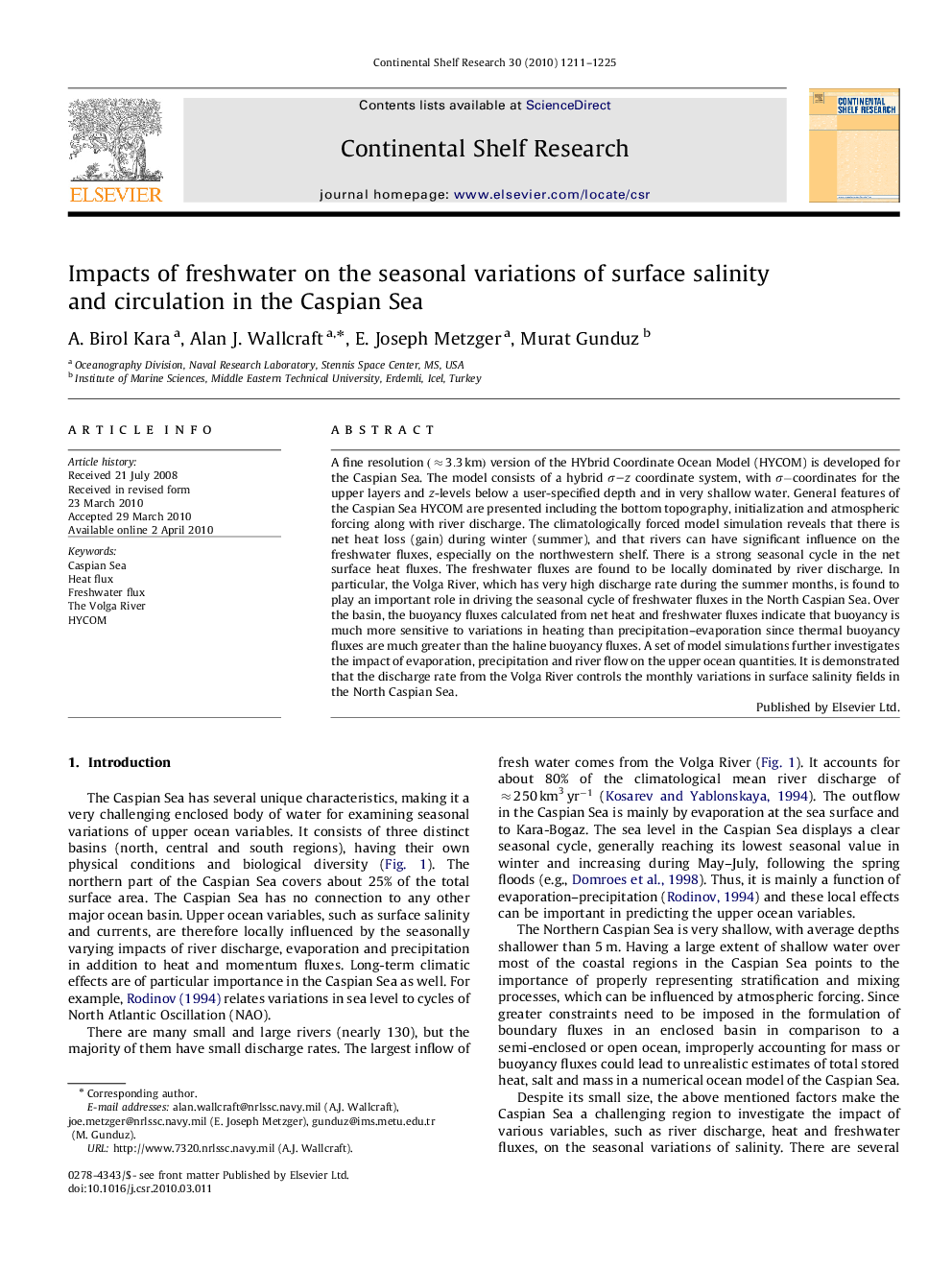| Article ID | Journal | Published Year | Pages | File Type |
|---|---|---|---|---|
| 4532840 | Continental Shelf Research | 2010 | 15 Pages |
A fine resolution (≈3.3km) version of the HYbrid Coordinate Ocean Model (HYCOM) is developed for the Caspian Sea. The model consists of a hybrid σ–zσ–z coordinate system, with σ-coordinatesσ-coordinates for the upper layers and z-levels below a user-specified depth and in very shallow water. General features of the Caspian Sea HYCOM are presented including the bottom topography, initialization and atmospheric forcing along with river discharge. The climatologically forced model simulation reveals that there is net heat loss (gain) during winter (summer), and that rivers can have significant influence on the freshwater fluxes, especially on the northwestern shelf. There is a strong seasonal cycle in the net surface heat fluxes. The freshwater fluxes are found to be locally dominated by river discharge. In particular, the Volga River, which has very high discharge rate during the summer months, is found to play an important role in driving the seasonal cycle of freshwater fluxes in the North Caspian Sea. Over the basin, the buoyancy fluxes calculated from net heat and freshwater fluxes indicate that buoyancy is much more sensitive to variations in heating than precipitation–evaporation since thermal buoyancy fluxes are much greater than the haline buoyancy fluxes. A set of model simulations further investigates the impact of evaporation, precipitation and river flow on the upper ocean quantities. It is demonstrated that the discharge rate from the Volga River controls the monthly variations in surface salinity fields in the North Caspian Sea.
